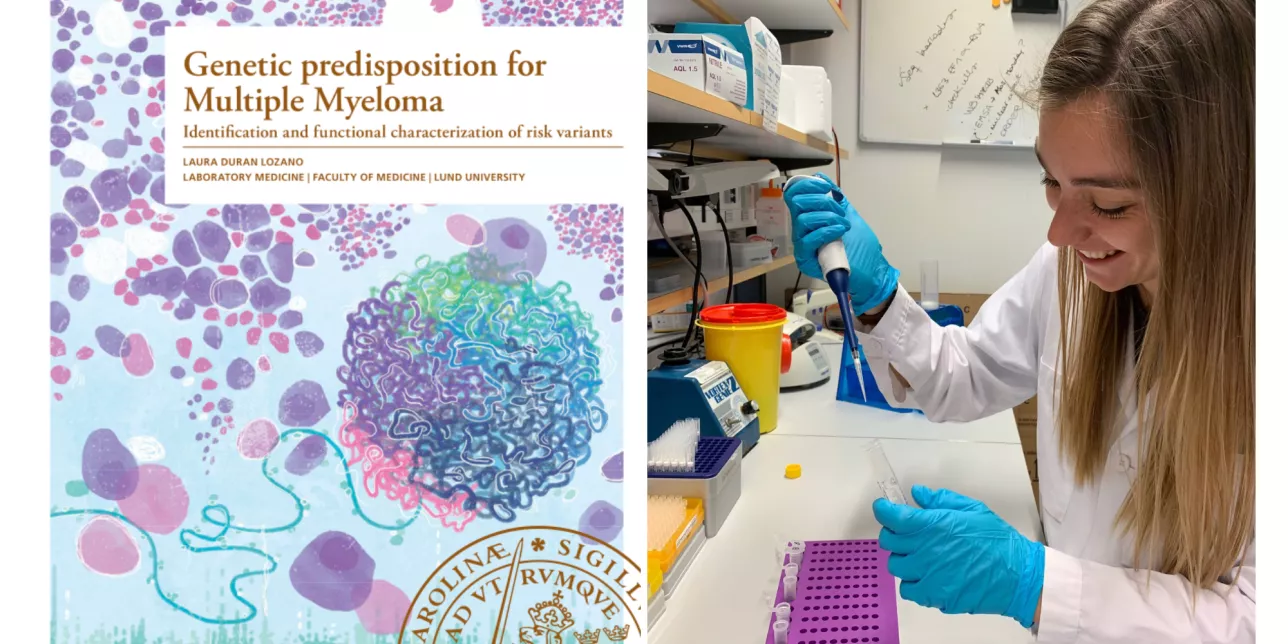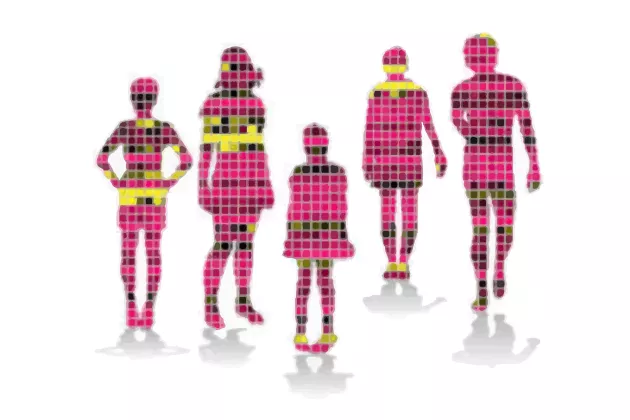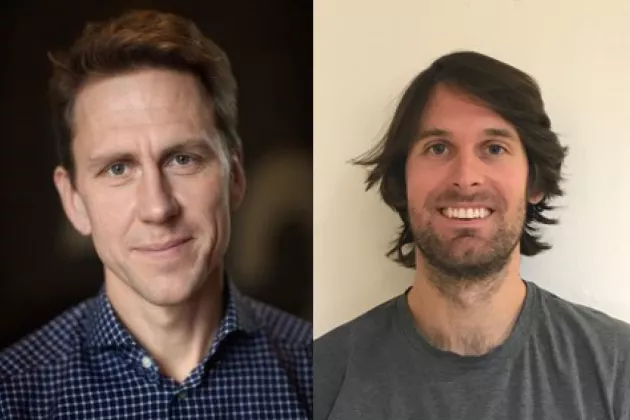What have your Ph.D. studies focused on?
“Multiple myeloma is a blood malignancy that affects the bone marrow and originates in a type of white blood cell known as plasma cells. Unfortunately, it has no effective cure yet. So it is important to study the associated genetic risk factors, as this can lead to a better understanding of the disease and help with prevention, early diagnosis, and new treatment options.
First-degree relatives of patients with multiple myeloma have a two- to four-fold higher risk of developing the disease. However, the molecular basis remains largely unknown. In my Ph.D. thesis, we set out to provide new insight into the mechanisms underlying genetic predisposition for multiple myeloma.
We set out to identify the genetic variants that are more common among multiple myeloma patients than the rest of the population through genome-wide association studies (GWAS) and, subsequently, study how those regions of the genome are involved in disease development.
The work housed in this thesis - my own, my lab mates, and all our collaborators - has led to the discovery of 10 new genes associated with multiple myeloma. It is important to highlight that most of my projects are collaborations as we use patient samples - 10s of thousands of patient samples – collected by several hospitals in Scandinavia and other places worldwide.
Our research has also led to the development of several genetic analysis tools. This includes a tool to find the transcription factors driving the expression of virtually any gene of interest, which I have been developing over the past four years,” explained Laura.
Can you tell us more about the cover of your thesis?
“My cover is the work of an illustrator, Laura Moreno, and I am very happy with how it turned out. She is very talented and was very patient and kind when working together to capture what I poorly drafted. She took inspiration from actual biopsy images and the work of Hilma af Klint, a Swedish artist and the mother of abstract art. This is something I am happy to see incorporated, as I wanted to have some Swedish element represented in some way.
For the artwork, I wanted three main concepts to be present on the cover. Starting on the top, these circles represent cells from a bone marrow aspirate of a multiple myeloma patient, where malignant plasma cells (in purple) have taken over and are much more present than they should be.
The bottom part, which looks like green stripes, is a Manhattan plot which is the graphical representation of the genetic association studies we perform in the lab.
Finally, since I am a passionate geneticist and DNA is the “raw material” or starting point of our work, DNA is present in the middle part of the cover which serves as a bridge between the disease and our research. The ball on the left shows the DNA in the nucleus of any cell. I also wanted to show the inner loops and protein interactions. So, this is represented by the string of DNA that comes out to the left. The little dots on the line are transcription factors, key proteins in gene expression which we studied in the 4th paper of the thesis,” described Laura.
How did you end up doing a Ph.D. at Lund Stem Cell Center?
“It was all thanks to a very good friend from university. She came to Lund University for an Erasmus and stayed in the lab and recently defended her thesis too, so cheers to her!
At the time, I was working in Barcelona in a group where I had done my master’s thesis. My friend told me about the CanFaster program, which is supported by the European Union’s Marie Skłodowska-Curie COFUND program and supports 16 Ph.D. projects related to cancer.
It works by matching potential students with labs they are interested in through an application process. That’s how I started working with my supervisor Björn Nilsson, who is a Principal Investigator at the Center. Originally, I had applied with low expectations, and I still remember thinking, why does this important researcher in Lund want me to work in his lab?” noted Laura.
What have you found the most enjoyable during your Ph.D. studies?
“What has been most enjoyable is working within an international environment. I have learned so much from my very talented and kind labmates, and I will keep the memories of our conversations like a treasure. We are from different parts of the world and love discussing world politics and social issues and joking about everything. Being in this type of environment is when you understand how important diversity is, and how being exposed to different points of view helps you be more open-minded and think differently. This is something that I hope I can have more of in the future.
Also, I am lucky to have found an incredible network of very good friends here, who are also doing their Ph.D.s at Lund University.
Though one of the most rewarding aspects of my Ph.D. has happened very recently, over the past few days. There is this beautiful tradition at Lund University of printing several copies of the thesis so you can give it to colleagues, friends, and family, usually dedicating a few nice words handwritten on the first page. Seeing how so many people are so genuinely happy and proud of this thesis, has been so moving and heartwarming to me. The support that I have been getting back has just been indescribable,” expressed Laura.
What has been the most challenging aspect?
“Well, no matter how lucky you are, and as I have been, with the supervisor, the project, or the environment, there will always be tough moments to get through. For me, they were about keeping me motivated throughout the entire Ph.D. process. For example, I have been working on the last step of my thesis since November of last year. This has been the longest, final sprint ever and has been extremely exhausting on many different levels.
Sometimes, the everyday work in a Ph.D. can be quite specific and feel meaningless. I pushed through in part thanks to my determination or stubbornness, but in the toughest of times, I would think about the bigger picture. I would think about how all the things that I am learning will be helpful and will allow me to help people and families with a high cancer burden. I would remind myself that while I may not be saving three lives every day, I am contributing to something bigger that could help people in the future.
In my case, it also gave me a lot of energy and determination to think about a very special person who died of metastatic breast cancer right before I started my thesis and to whom I have dedicated it to,” explained Laura.
What are your plans following your Ph.D. defense?
“I would like to travel and have planned a short trip to Gotland, Sweden, before going on a month-long trip to Colombia with a friend. Due to the pandemic and the end of the Ph.D. I have not been able to travel for the past couple of years, so now I want to see the world a bit. After my trip, I will return to my current lab for a few months to finish the last project.
I will then be ready to start a new job, though nothing certain is planned yet. I do know that I would like to stay in Scandinavia or the Öresund region and work within translational cancer genetics,” noted Laura.
Any tips or advice for future Ph.D. students?
“So many! If I am being honest, I always thought I could have written another book that would have been thicker than my thesis about all the things I learned as a Ph.D. student and which have nothing to do with genetics or multiple myeloma.
The main tips I would like to share today are:
- This one may sound obvious, but sometimes we just get stuck in a nonsense loop. If a technique does not work, you need to try different conditions if you want different results.
- Enjoy the process and surround yourself with good people. When you feel stuck, go to your colleague, they might have had those same problems before and are probably very happy to help you. Whenever tough moments come and are hard to deal with alone, ask for help, and do not wait until it’s too late.
- Finally, I would like to encourage all young women to pursue a career in academia. Things are getting better, but women are still very much underrepresented in scientific leadership positions. There is still a long journey in terms of diversity,” concluded Laura.




